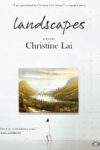
Art by Jenifer Evans (now Jasen Verefin)
This essay first appeared in the Full Stop Quarterly, Issue #7. To help us continue to pay our writers, please consider subscribing.
October 4, 1957, 19:28 UTC: A single-stage Soviet 8K71PS rocket blasts off from the Baikonur Cosmodrome in central Kazakhstan, burns across the sky during a four-minute bout with gravity, a meteorite in reverse, and then shoots through the earth’s thermospheric ceiling, crossing into the black, where it commits to orbit its payload, that gleaming shuttlecock, Sputnik 1. Thus begins the Space Age.
There is not what you would call an active debate about this. Only your most contrarian friend, in a fit of pedantry, might suggest an alternative inaugural event—Nazi Germany’s forays into rocketry, in which their explosive-laden V-2 rockets kissed space before nosing toward London, is one contender—and you’d be a long time in searching for someone to point to a post-Sputnik start date. The historical consensus has that tiny Soviet satellite rocketing humankind into the Space Age. As beginnings go, only the Atomic Age kicked off in more spectacular fashion. But while that first mushroom cloud provided us a planetary self-destruct button and set a generation to digging fallout shelters, the fast-lapping star of Sputnik put a finger under our collective chin and directed our gaze skyward, toward the promise of new worlds.
In the almost six decades since, we’ve dirtied the moon with bootprints; voyaged, via our Voyager avatar, beyond the bounds of our solar system; and made camp on Earth’s gravitational front lawn aboard orbital space stations—feats of exploration and engineering ripped from the covers of yesteryear’s sci-fi paperbacks, all chrome, rock, and robot. This story of new tools and new places to wield those tools is a familiar one, and it places the Space Age in some of our longest-arcing epochal traditions. You need only look to the adjectival use of space age—usually abutting technology, or some example thereof—to place the era in the lineage of the Stone, Bronze, and Iron Ages. The Space Age as tool age may be more ranging and idiomatic than its strictly elemental predecessors, but it’s given us carbon fiber, satellite communications, and Tang, which is more than enough to qualify.
The self-consciously historical names that populate our roster of spacecraft—Pioneer, Sojourner, Pathfinder—are perhaps the most conspicuous nod to another oft-invoked model of the Space Age, that of the Age of Discovery. In this linkage to the flag-planting exploits of our past, Spanish galleons are recast as Saturn V rockets, Neil Armstrong plays the part of Cook, and Magellan the explorer makes a robotic cameo as Magellan the Venus Radar Mapper, with the discovery being not the New World, but new worlds. When we throw a parade for recently returned astronauts, this is what we’re celebrating: the cartographic accomplishment of their boldly going.
Some, their dreams colonized by visions of a Red Planet Earthrise, hope to take this a step further and boldly stay once they get where they’re going. They see the Space Age as now in the early stages of a colonial effort, or even, for the more earnest, an exodus, recalling not only Plymouth Rock but such mass migration events as the Maori settling of New Zealand. A sci-fi reader’s sense of inevitability and a growing apocalyptic urgency, driven by climate change and the still-present specter of nuclear annihilation, animate this idea of the Space Age.
Sure, there exist other models of the Space Age, such as the Space Age as aesthetic period, in the mode of the Baroque or Gothic. But Googie architecture, that kitschy crystallization of World-Fair futurism (think The Jetsons), is hardly the first thing that comes to mind when discussing the legacy of the Space Age. By and large, it is the historical templates of the tool age, exploratory era, and migratory moment that structure our Space Age conversations: You say Space Age, I say rocket ship. Of these, the tool age is by far the most accessible version of the era. Because the most obvious characteristic of the age—space—is, for the vast, vast majority of humankind (at the time of this writing, all but 536 of us), a vicarious, or even just notional, experience. Space remains, in the words of astronaut Michael Collins, “the exclusive property of a handful of test pilots.” For the rest of us, firsthand experience with the Space Age means cooking with a nonstick pan.
Now, though, with no fewer than three private companies planning Mars-shots in the coming decade, as well as the Martian aspirations of burgeoning space-racers China and India and a reinvigorated NASA, there’s a growing sense that space is about to open up in a big way. Interest in space, having waned during the routinization of the Shuttle years, eclipsed by the Internet Age and its obliteration of space (not to mention time), has reentered the orbit of the public’s imagination. You see this in the explosion of books being published about space, from the historical (Rise of the Rocket Girls, Nathalia Holt) to the aspirational (How We’ll Live on Mars, Stephen Petrenak) and beyond (Beyond: Our Future in Space, Chris Impey). Notably, most of these books are written by people who have never been to space.
Page through a work of the earthbound Space Age and you’ll encounter everything from mass drivers and space law (who’s liable for asteroid lassoing accidents?) to the merits of fungus as radiation shielding. The human experience of space flight is recounted as a gung-ho adventure story, with special attention paid to the curious bodily mechanics of life in space (the nausea, the atrophy, the bone stretching). This is fascinating stuff, obviously. It also fits comfortably within the bounds of what are our essentially logistical conceptions of the Space Age.
For us Teflon Space Agers, this preoccupation with logistics is only natural, considering that those logistics represent the era’s barrier of entry, and we remain on the wrong side of that barrier. As spectators, we have latched onto the spectacle of the age, and in so doing we have perpetuated an idea of the Space Age as an age of logistics. But the Space Age is more than just the acceleration of an object to 17,560 miles per hour. Ask an astronaut what the Space Age means and the answer is unlikely to contain anything about nanotube elevators or the colonial promise of Alpha Centauri. For those few who have slipped the loop of gravity’s lasso, the quintessence of the Space Age is not found in the novelty of space or the tools that carry us there; it lies much closer to home.
•
The cover of Frank White’s The Overview Effect: Space Exploration and Human Evolution, first published in 1987, sports what is today a stock image: a photograph of the earth, in its round entirety, pinned to the field of space. It is a tableau so commonplace that your phone probably came preloaded with two or three variations as options for its wallpaper. The casual, widespread use of these photographs has made it easy to forget just how revolutionary such images of our planet were when they first appeared in the middle of the last century. To that point, humankind had known its home only symbolically, from maps and globes, models fashioned after a subject that had been apprehended piecemeal. But such models are political creations, and their presentation lacks what could be called a universal context: Earth does not exist in a vacuum.
The particular photograph that adorns the cover of The Overview Effect comes courtesy of the 1972 Apollo 17 mission. There’s a good chance you’ve seen it before. It’s called The Blue Marble, and it is perhaps the most iconic and widely distributed image in human history.
Taken en route to the moon from some forty-five thousand miles away, this portrait, the first full picture of our planet, is dominated by a very recognizable cradle-of-humanity Africa, swirled with clouds but blazingly clear, beside which lie, like a semi-colon, the Arabian Peninsula and the island of Madagascar. The day-lit Earthface, unmarred by borders or glyphs of tiny oil wells, no regions color-coded according to GDP, shines brightly enough to black out all the stars in the surrounding void. It’s just Earth and vacuum.
Even putting aside the apocalyptic metaphor contained in its seemingly whimsical name—what are marbles for but to smash into things?—The Blue Marble has the power to evoke, upon the briefest contemplation, a sense of loneliness and fragility that would leave you a huddled mess of existential despair if it didn’t also happen to inspire such a gobsmacking degree of awe and solidarity. Needless to say, this is emotional territory that no globe or map could ever hope to chart. When you look at this photograph, you aren’t looking at a hypothesis, an approximation, a metaphor. It’s the real thing: our planet, our home. We’re alone in this together. It’s not surprising that this un-annotated-Earth image galvanized the environmental and peace movements of the day, and indeed continues to be hoisted as a banner for global harmony. The feelings of tenuousness and fellowship it stirs are, though, Frank White tells us in The Overview Effect, just a pale version of what the astronauts who take in these scenes firsthand experience: an overwhelming sense of global, even universal, concord, a “shift in consciousness” that doesn’t just follow the astronauts home, but changes their relationship with that home. Call it the Overview Effect.
The coinage is White’s. White, whose space chops include employ with the Space Studies Institute and co-authorship of not one but two books with Isaac Asimov, smithed the term in the late nineteen-seventies following his own brush with the then-unnamed phenomenon while on a cross-country flight. Looking down on the miniaturized diorama a city makes of itself when viewed from thirty-five-thousand feet—in this case, monument-studded Washington, DC—White was struck by his disconnect from the political machinations of the invisible actors below. He realized, watching the pixelated flow of traffic on the freeway, each car a self-contained, totally inaccessible world, that our physical perspective and our philosophical perspective are inextricably entangled. In White’s telling: “Our ‘world view’ as a conceptual framework depends quite literally on our view of the world from a physical place in the universe.” Altitude is attitude. From this White deduced the philosophical sea change that must accompany space flight, i.e., the Overview Effect.
The Overview Effect is, in White’s most succinct formulation, the “realization of the unity and ecological interdependence of life on Earth.” This is a realization not inaccessible to those of us here on Earth, of course. Travel can unstitch the borders of our empathy. A dome of night sufficiently freckled with stars can be enough to shrink the ego. Love can do both. But the reliability of the Overview Effect, and the instantaneous intensity of the feelings it’s capable of generating, makes it unique. It’s the difference between reading about the ocean and getting bowled over by a sneaker wave.
If you think this phenomenon sounds quasi-spiritual in the abstract, the astronaut accounts that White compiles in The Overview Effect all but do away with the qualifier. They read like a pamphlet for a New Age retreat: “awe-inspiring,” “explosion of awareness,” “revelation,” “inner peace,” “a message from the universe.” This is the mystic vernacular of enlightenment. And as the Buddha or Jesus could well tell you, no task is more difficult than relating enlightenment to the unenlightened. One of the better ways to span—or, failing that, measure—the metaphysical gulf is metaphor. Hence moonwalker Michael Collins’s picks for an Apollo mission dream team, which sound like the setup of a walked-into-a-bar joke: a philosopher, a priest, and a poet. (“Unfortunately,” he points out, “they would kill themselves trying to fly the spacecraft.”) Most of the analogies the flyboys draw are fictive, and less than relatable—they include decoding Plato’s cave, time travel, and a visit to Wonderland—but Russell Schweickart, of Apollo 9, zeroes in on a universal experience that manages to capture both the magnitude and the nature of the Overview Effect: “I viewed my mother quite differently when I was in the womb than I did after birth. Afterward, I was able to take more responsibility for her.”
An epiphanic philosophical rebirth of bodhi-tree profundity: This is not the stuff of blacksmiths and forges, nor does it harken back to the Harrison chronometer and uncharted isles. The Overview Effect, what is, for those who have actually traveled to space, the essence of the Space Age experience, evokes another tradition entirely. In its wholesale usurpation of worldview, it recalls the great paradigm shifts of human intellectual history—the Enlightenment, say, or its Romantic backlash. And to say that the Overview Effect has the potential to be just as transformative would not, for White, be any kind of hyperbole.
Because White has his own analogy for Overview Effect initiates: the “explorer fish,” that first primordial sea creature to take the plunge and crawl onto dry land. As a metaphor, it illustrates the profound newness of spaceflight and the experiences it enables, as well as the conceptual expansion of “the world”—from seas to seas and land to, now, seas and land and space. But the line White draws between astronauts and proto-amphibians is more than metaphorical; it is historical, and historic.
•
In 1986, the tragic transmutation of Challenger from space shuttle to debris cloud, a fiery metamorphosis that snuffed out the lives of seven astronauts, including that of the first civilian astronaut, teacher Christa McAuliffe, forced the US space program into a crisis of purpose: Where do we go from here? And more importantly, why? Chief among White’s reasons for writing The Overview Effect was to address this crisis, and his answer is a doozy: “Ultimately, planning the space program is equivalent to planning the evolution of human society, an opportunity,” he notes, with unavoidable understatement, “of revolutionary importance.”
This is the “evolution” of White’s subtitle: not the kind that over eons might produce meatier shins to pad against zero-G bulwark collisions, or legs stumpy enough to prevent accidentally springing beyond the grip of a small planet’s gravity well and into the abyss (a real concern of the first moonwalkers), but the societal evolution that will result from the Overview Effect. The drastically expanded conscientiousness created by the Overview Effect will allow us, believes White, to tear down the divisive scaffolding of our current gas-guzzling, border-crossed civilization. The resultant “planetary civilization,” which he calls Terra, will be characterized by an “institutionalized awareness of the planet as a whole, and planetary management as a primary science.”
That the virgin soil of space is the best place to sow utopia is not a novel idea. The Russian Cosmists were already preaching the utopian potential of outer space in the nineteenth century. But the idea that the experience of space will lay the necessary philosophical foundation for utopia here on Earth—this is new. White doesn’t stop with the Overview Effect and Earth, either, postulating the existence of other “effects” (“Future space missions . . . will consolidate the Copernican Perspective and encourage multiple experiences of the Universal Insight”) that he believes will eventuate in an egalitarian interstellar civilization (Galaxia, as you probably guessed).
White eventually saddles up on the merry-go-round of teleology, invoking destinies human and universal to try to explain the purpose of space exploration. But his desire to harness the power of space for societal betterment echoes a refrain of Overview Effectees that world leaders, particularly those whose countries are locked in conflict, should travel to space. One such evangelist is Congressman Bill Nelson. Nelson, who while holding office crewed a shuttle mission in 1986, believes “the world would be better off for it because the perspective of the leaders would change.” To this end, Nelson and others have proposed a Camp David-like space conference at which heads of state might work out their differences. Astronaut Eugene Cernan is more inclusive: “If you could get everyone in the world up there, wouldn’t they have a different feeling?” Not the most immediately feasible of plans, but the sentiment is important: Space changes people for the better; change enough people, and the world will be changed.
•
Even though the Overview Effect represents possibly the apotheosis of human experience and contains the power to remake (“save” doesn’t feel like too strong a word at this point) our world, it has not received much airtime, so to speak. Despite White’s goal of sparking a conversation about space travelers’ experience of the Overview Effect, NASA has not adopted “evolving human society, one astronaut at a time” as its mission statement, and mention of the Overview Effect is absent from nearly every contemporary work of literature about space—expectedly from logistics-heavy texts like the recently reprinted The Case for Mars, by Frank Zubrin, godfather of the wannabe-Martian movement (Zubrin spends more pages discussing fuel options for a Mars mission than the human crew), and less so from more human-centric works such as Mary Roach’s Packing for Mars: The Curious Science of Life in the Void. (My own discovery of the Overview Effect came when I crash-landed on its Wikipedia page after falling into a hyperlink wormhole in the pursuit of more classically logistical Space Age research.) Among the many books in which you won’t find the Overview Effect included are the boldly subtitled Space Exploration: All That Matters and the NASA-sanctioned A Dictionary of the Space Age. And with entries for “go fever” and “post-orbital remorse” (as well as plenty of delicious portmanteau, including “moondoggle,” “lunartic,” and “Muttnik”), the Overview Effect’s exclusion is clearly not due to a narrowness of scope.
This general snubbing seems to suggest that the Overview Effect may no longer exist, or at least has considerably weakened: Given the comparison White draws between space flight and the history of terrestrial air travel, this shouldn’t be too surprising. A survey of the coach cabin upon touching down at Newark is unlikely to yield anyone claiming anything even remotely like an epiphanic expansion of empathy. So how much of the Overview Effect’s effect was tied up in the novelty of the early years of space flight and the pure sense of wonder reserved for something so exclusive, so new? Does enlightenment have a shelf-life? Or, for that matter, a half-life? There’s no greater black hole to insight, after all, than routinization, and nothing says routine quite like dozens of Earth-imagery coffee-table books.
A check-in with the modern pantheon of astronauts will quickly ice any doubts about the continued power, and relevance, of the Overview Effect. The speech of astronauts Scott Kelly and Chris Hadfield, both of whom have played a major part in rekindling the lapsed Cult of the Astronaut, is heavily inflected by the experience of the Overview Effect. Chris Hadfield, who began his career as a fighter pilot in the Royal Canadian Air Force, became a household name thanks to videos of his microgravity guitar playing and the abstracting photos of our planet he snapped while aboard the International Space Station. (He is himself a contributor to the Earth-imagery coffee-table-book genre.) “To simply look through the camera lens and press the shutter button is to see our world with both newfound understanding and respect,” he writes in An Astronaut’s Guide to Life on Earth, his memoir of a life lived for space—and the way that the experience of space informs how life should be lived. “Seeing the whole world shifts your perspective radically,” he writes. “In fact, it’s made me feel I have a personal obligation to be a good steward of our planet and to educate others about what’s happening to it.” Hadfield recounts the story of a friend frustrated by his repeatedly stopping to pick up litter while on a walk together: “This turns out to be one the little-known aftereffects of space flight. I now pick gum wrappers up off the street.” You send a fighter jock up and a nagging environmentalist comes back.
Scott Kelly, twin to also-astronaut Mark Kelly, recently completed a yearlong stint aboard the International Space Station as part of a study on the long-term effects of space travel on the human body. In addition to the bone loss and extra inch of height, he returned to Earth bearing all the signs of the Overview Effect, reporting, among other hallmarks, a “heightened sense of empathy.” “The more I look at Earth, at certain parts of Earth, the more I feel more of an environmentalist,” he said during his final news conference in orbit, citing the space-visible impact of pollution across the globe. Kelly’s Russian counterpart for the anatomy-altering mission, Cosmonaut Mikhail Kornienko, came away with a familiar spacefarer notion: “I think if we could send our presidents up for two months, our problems on Earth would be solved.”
Sure, maybe all of this whiffs of panacean oversimplification. And not every spacefarer returns home with a claim to enlightenment. (Remember Lisa Nowak, with the diapers and the BB gun and the unrequited love?) But for the plurality of those who have had their literal, blood-bumping heart misshapen by the microgravity of space—the chambered organ rounds off and becomes more spherical, but imperfectly so, like a still-forming planet—the experience has clearly done something profound to their metaphorical heart, and this is not something we should be quick to dismiss. It’s why, for all the logistical advantages offered by robots (and there are many—they don’t starve, freeze, or suffocate), the argument that they be used instead of humans for space exploration misses the point of space exploration entirely. It was Yuri Gagarin, after all, not Sputnik, who could make the appeal, upon returning home, “Orbiting Earth in the spaceship, I saw how beautiful our planet is. People, let us preserve and increase this beauty, not destroy it!”
Maybe it’s time, then, to reconsider just when the Space Age actually began. More so than the helium isotopes we may someday extract from the lunar soil or the insurance policy we think a Martian colony will buy our species, the lasting legacy of the Space Age is something that only Gagarin and all the fleshy explorers who followed after him could leave us: that we knew our home for the first time, and it made us want to do better. Thanks to the testimony of that prodigal vanguard, the Space Age has been opened to us all—no Calphalon cookware required.
Justin Erickson currently lives in St. Louis. His words can be found in the digital archives of The Rumpus and This Recording.
This post may contain affiliate links.







